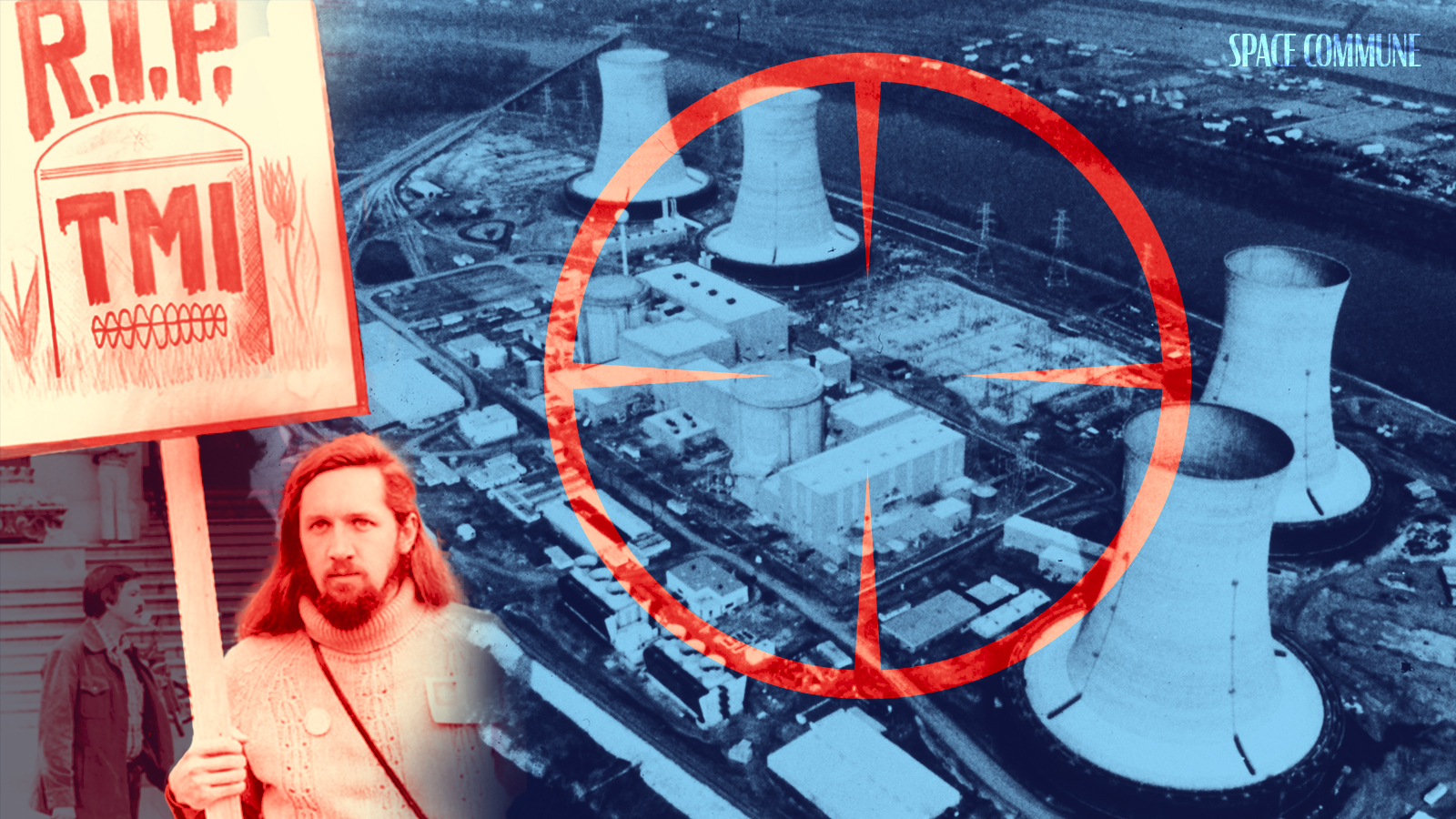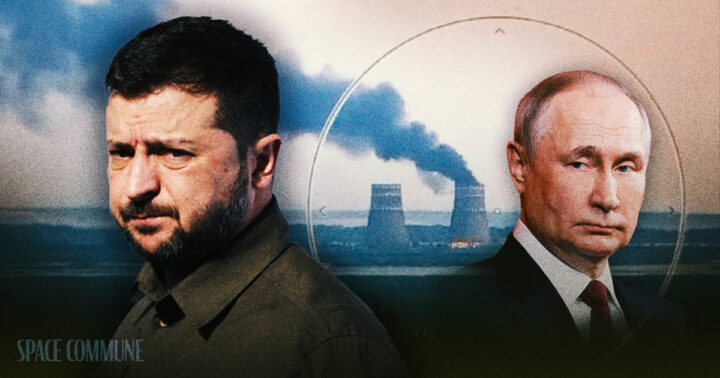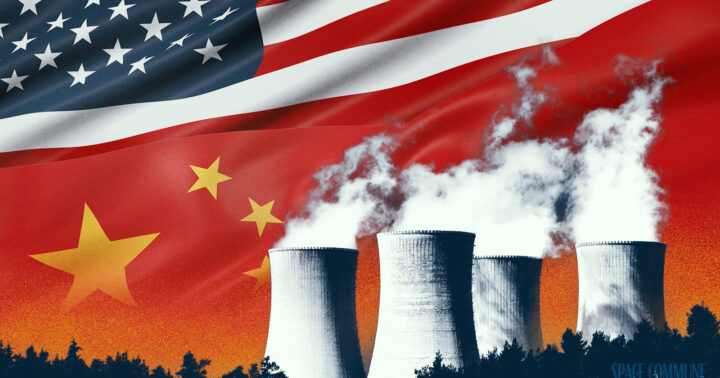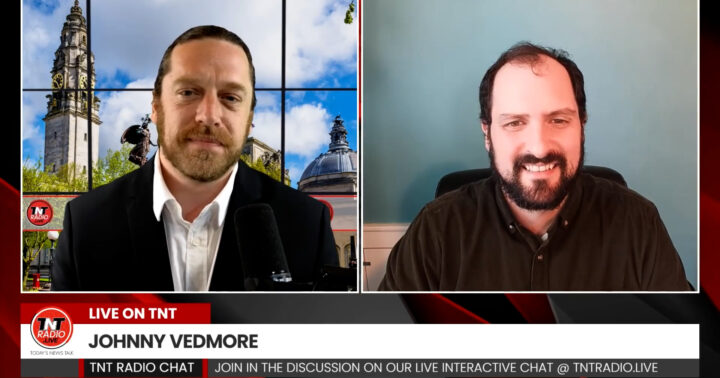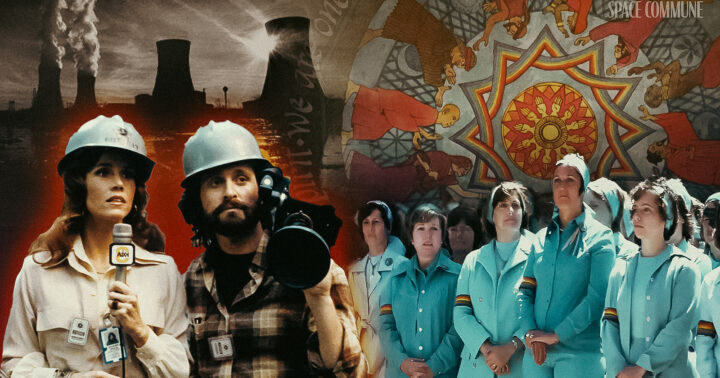“The incident at Three Mile Island nuclear plant began March 28 and unfolded like the H.G. Wells story ‘War of the Worlds’ broadcast by CBS radio in October, 1938. As in that bit of masterful psychological warfare that presented a fictional invasion from Mars as ‘news,’ there was never any real danger from the incident itself. The danger came from the panic created by those presenting the ‘news’ of the event.”
-Fusion Energy Foundation, 1980
No lives were lost. A mere whisper of radiation, almost too faint to trace, escaped into the ether. Science could find no link to an increase in cancers, yet the collective terror sparked by the incident and the coincidental release of the film The China Syndrome led the nation to abandon its rapid expansion of nuclear energy—the cleanest and most abundant power source known to man.
Our first article in this three part series explored the roots of the mystical gnostic groups that set the fanatical anti-nuclear movement in motion, bringing persistent pressure from below; from above, unfavorable interest rates and industrial policy largely mothballed nuclear investment in the West. Due to perverse monetary incentives, it is now more profitable to shut down a nuclear plant than it is to build one.
But in order to cement the “zero growth” policies of the 80s and beyond, there needed to be a mass formation event involving nuclear radiation. Not an disaster, but the idea of one; the fear of radiation would be enough to ignite people’s deepest hypochondriac fears of being forever violated by an invisible force, contaminating their “precious bodily fluids.”
To get an idea for the fear of nuclear energy after the Three Mile Island incident, just watch a speech from the May 6, 1979 Anti-Nuclear Rally in Washington D.C:
What we’re doing here today is more important than the Vietnamese War. It’s more important than dealing with racism, than dealing with sexism than dealing with hunger. Because I can feel hunger, I can see war, I can feel racism, I can feel sexism, I cannot see radiation, I cannot smell radiation, I cannot hear radiation.
– Anti-Nuclear Activist Dick Gregory
In this article, we’re going to cover a conspiracy theory that isn’t conspiratorial at all: that the Three Mile Island incident was the result of deliberate sabotage.
The Despicable Trend of Nuclear Sabotage by Disgruntled Insiders
The thought of nuclear sabotage usually brings to mind environmentalists running a boat into an exhaust pipe, or 9/11-style terrorists flying a jumbo jet into a reactor. The reality is that nuclear plants are built in a way where even if such attacks were attempted, there would be no mushroom cloud or mass deaths. There would simply be a multi-billion dollar cleanup.
Nuclear sabotage has looked more like disgruntled employees, who may or may have been involved in anti-nuclear “self-help” cults of the time, jamming a valve shut or disconnecting an important wire. Especially in the 1970s and 80s, internal nuclear sabotage was commonplace. At Diablo Canyon, a late-60s California plant still in operation today, it was reported that “apparent sabotage by disgruntled employees have reportedly played a large role in cost overruns.”
A 1983 Nuclear Regulatory Commission study reported that “32 possibly deliberate damaging acts at 24 operating reactors and reactor construction sites from 1974 to 1982… directed against plant equipment in vital areas at operating power stations. The damage included cut electrical cables and valves placed in the wrong position.
Since there were no indications of unauthorized entry to the site of these incidents, they are thought to have involved insiders. An internal commission memorandum, issued last year, concluded, ”The major threat of sabotage to a nuclear plant is associated with the insider.”

Internal nuclear sabotage was commonplace.
The China Syndrome: Coincidence or Aquarian Conspiracy?
The biggest coincidence of the TMI Nuclear incident was the fact that the anti-nuclear propaganda film The China Syndrome had hit the theaters 12 days earlier, ominously warning of a nuclear accident that “could render an area the size of the state of Pennsylvania permanently uninhabitable.”
The Washington Post reported soon after that “The makers of “The China Syndrome” have declined to discuss the Harrisburg accident, though producer [Michael] Douglas admitted that there were “ironic similarities between the incident at Three-Mile Island and the movie’s fictional power plant.”
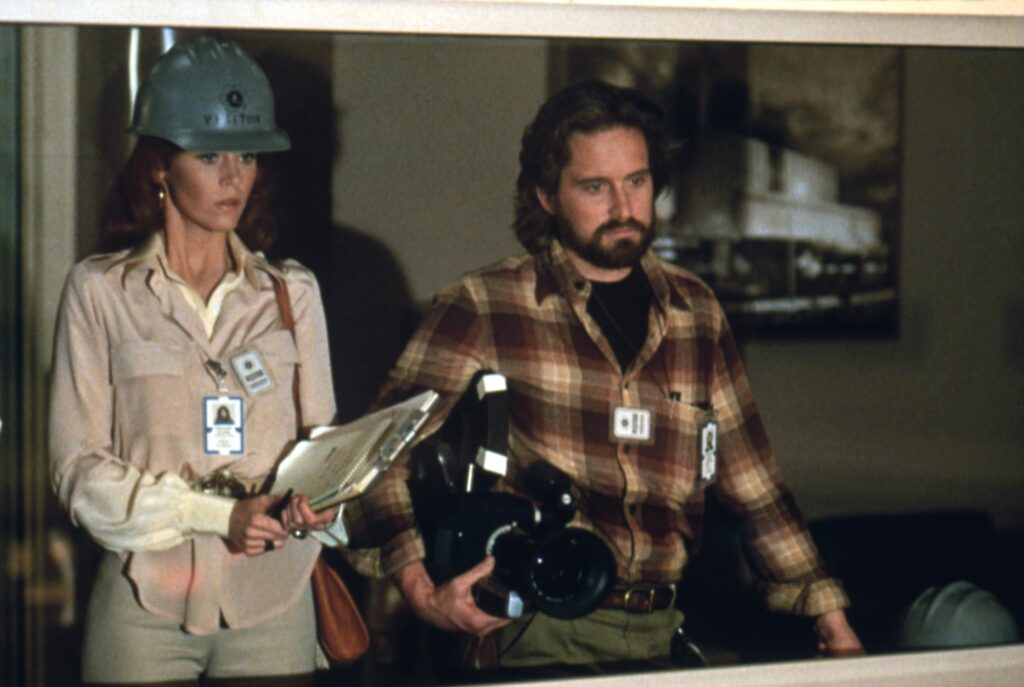
In People Magazine, co-star Douglas said of a conversation with the movie’s director:
“He told me it would be a race between getting the movie made and a major disaster,” Douglas said. “The Three Mile Island situation really brings the point home. It’s an eerie feeling.”
Lending technical expertise to the film were the notorious MHB Technical Associates, Creative Initiative Foundation cult members who had spectacularly quit General Electric to become professional nuclear whistleblowers as part of the “Aquarian Conspiracy.”
The sequence of events in the film ran parallel to that of Three Mile Island: it involved a turbine trip, some lost feed water, leading to a shaking floor in the control room. A stuck relief valve leads to high pressure indications, resulting in the need to manually manipulate the valves.
In their few years of existence prior, The China Syndrome advisors MHB Associates had already spoken extensively about nuclear sabotage.
China Syndrome Writers: “We Know How to Sabotage a Reactor”
In 1977, MHB co-founder Gregory Minor testified to a commission that a prominent American study of nuclear energy did “not adequately study the possibility of reactor sabotage, particularly in light of increasingly violent anti-nuclear demonstrations throughout the world.”
Left out of the testimony is the fact that it was Minor’s associates in the Creative Initiative Foundation and Ralph Nader’s “Clamshell Alliance” that were leading said violent demonstrations.
Minor went on to say that the study did not “properly consider the probability of an ‘inside job.’” Minor said he believed he possessed the technical ‘know-how’ to sabotage a reactor, but assured the inquiry he had no intention of doing so.
Three Mile Island Mirrors Exact “Sabotage” Drill Conducted at Los Alamos
In a massive coincidence, in the weeks before the actual Three Mile Island incident, Los Alamos National Laboratory (originally built as part of the World War 2-era Manhattan Project) simulated a series of events that hypothetical saboteurs would take to disable a nuclear reactor.
Their study eerily foretold many key events of the actual Three Mile Island disaster: a loss of all AC power, a sudden turbine and reactor shutdown, and a failure of the steam generator’s heat withdrawal—all eerily duplicated in the real accident. Most unsettling, they hypothesized an open relief valve on the pressurizer, the very valve that became stuck open during the Three Mile Island incident.
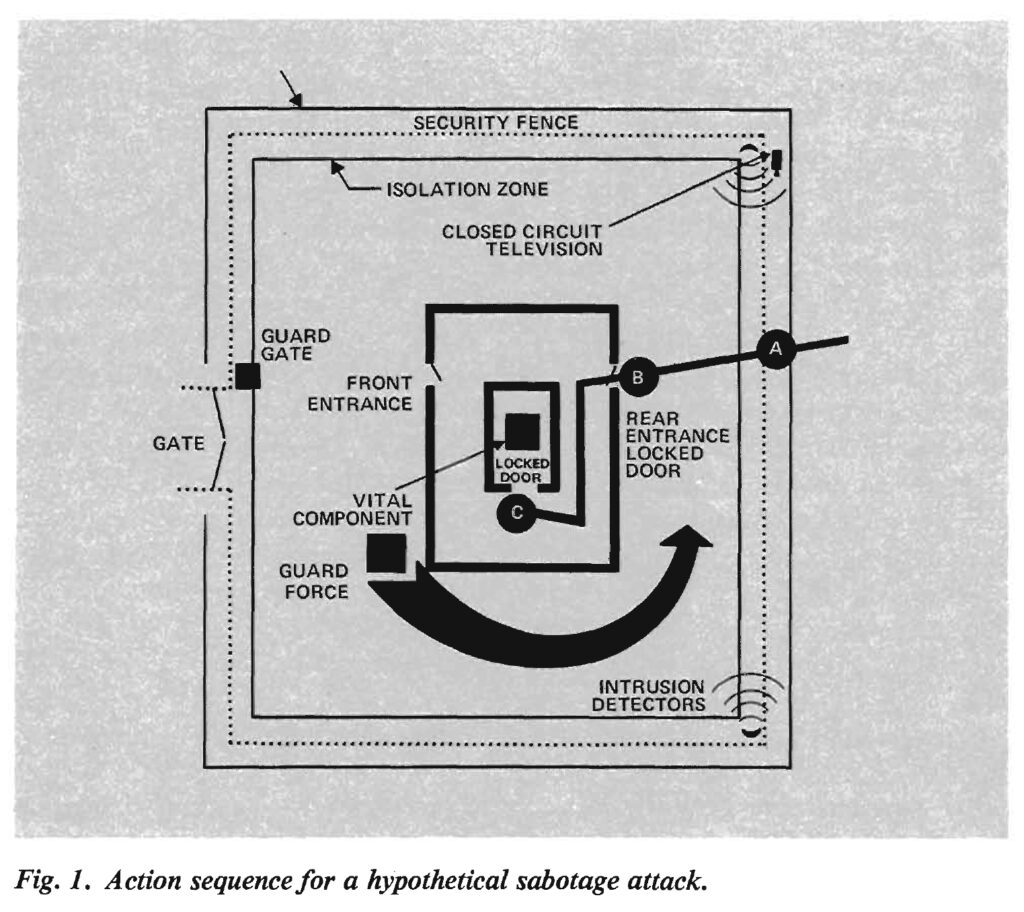
In their report of the experiment, the Los Alamos scientists wrote that “the close parallel between the hypothetical sabotage and the real accident demonstrates vividly the importance of detailed, computer-aided analysis in the evaluation of both the security and the safety of nuclear power plants.” The parallel is too striking to ignore.
Galen Winsor: An Eyewitness to Sabotage
A nuclear expert eyewitness who spent three weeks in a consulting role during the TMI cleanup was Galen Winsor, senior engineer for UNC Nuclear Industries. In 1981, he said that the TMI reactor probably “sustained very little damage,” and that it could be repaired and put back on line in six weeks if the NRC would stop being overcautious.
A few years later, he said in a TV special that he knew the MHB Technical Associates personally, and compared what happened at Three Mile Island to a movie script that they wrote.
“With 14 months advance notice, the industry still went along with a sham. Nothing happened there except that the owner, the operator, and the regulators conspired to turn it off… The fuel didn’t melt, the China Syndrome is a scriptwriters fantasy. They take that information and bugger it up so you don’t understand. So there was no accident at Three Mile Island? No, they did it on purpose. Shut her down.”
Reports: A Local Cult Had Advanced Knowledge
Winsor’s allegation is that the TMI incident was known about in advance. Certainly, the timing is hard to ignore; in addition to The China Syndrome coming out, the chain of events occurred in the wee hours of March 28, 1979, exactly one year to the day that TMI’s reactor had been turned on.
According to newspaper reports coming out of Harrisburg, PA, where the plant was located, a local sex cult called “The Neo-American Church” had sent a letter to the local assistant district attorney warning that “great violence” was about to occur.
Cult members “quietly warned families and friends” in the area to leave the region before the end of March, 1979 because “something big was going to happen that would affect the region for about 100 square miles.” It was also reported that cult members were known to have worked as steamfitters and welders in the Harrisburg area, involved in the construction of the plant.
A Suspicious 1978 Article
Another breadcrumb was a suspicious article authored by paranormal writer Larry Arnold, Director of “ParaScience International.”
Titled “Tomorrow’s Disaster at TMI: Meltdown”, the article warns of 27,000 deaths, 73,000 injuries, and $17B in property damage, with 90 percent of the population evacuated from “an irradiated area the size of Pennsylvania.”
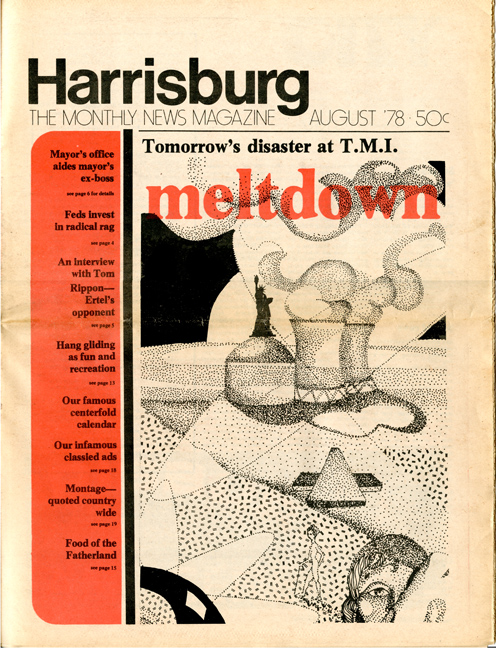
As Arnold recounted in a letter to the Governor of Pennsylvania:
In July 1978 we authored an insightful, and as it proved to be nine months later, highly accurate published in Harrisburg Monthly Magazine: MELTDOWN! Tomorrow’s Disaster at Three Mile Island. It described a Class IX multimode accident at Unit 2. On March 28, 1979 we were vindicated.
Calls for an Investigation Ignored
Paul Leventhal was co-director of the US Senate investigation of the Three Mile Island accident. Years later, he said “The initiating event was always so mysterious in that so little was known about it. I wanted to hire someone like a former FBI agent to do an investigation but [the] co-director objected.”
Andrew Tully was a war reporter and national columnist who wrote about the possibility of sabotage at TMI.
“I contacted sources in the American intelligence community… they strongly urged that the subject not be mentioned in print. ‘We have to think about the danger, to keep rigid watch,’ said one source. ‘But any public discussion might cause public panic.”
Indeed, just four days after the incident, the FBI declared that sabotage was ruled out.
The Los Alamos Scientific Laboratory (which previously had conducted an experiment that matched the series of events at TMI) wrote:
There was very little protection against insider sabotage. …There was very little or no control of the whereabouts of people inside the vital area; so it cannot be said that sabotage to the auxiliary feedwater system was impossible… some vital area doors that should have been locked or guarded were found to be open and unguarded. Actually, there was very poor protection against the sabotage actions of the insider. The conclusion can be drawn that the protection against the activities of an insider is still inadequate at TMI.
U.S. Representative Robert K. Dornan said in 1979 “all of the information to date clearly points in the direction of an act of sabotage, probably by someone within the plant. The safety features built into nuclear plants make it unlikely that the chain of events that occurred did so without human design.”
Pennsylvania State Representative Joseph Zeller, who had worked for a nuclear plant construction firm for 15 years, said, “This was sabotage. Somebody or some team deliberately crippled that plant.”
The former director of the Atomic Energy Commission, L. Manning Muntzing, said “It’s a phony crisis.”
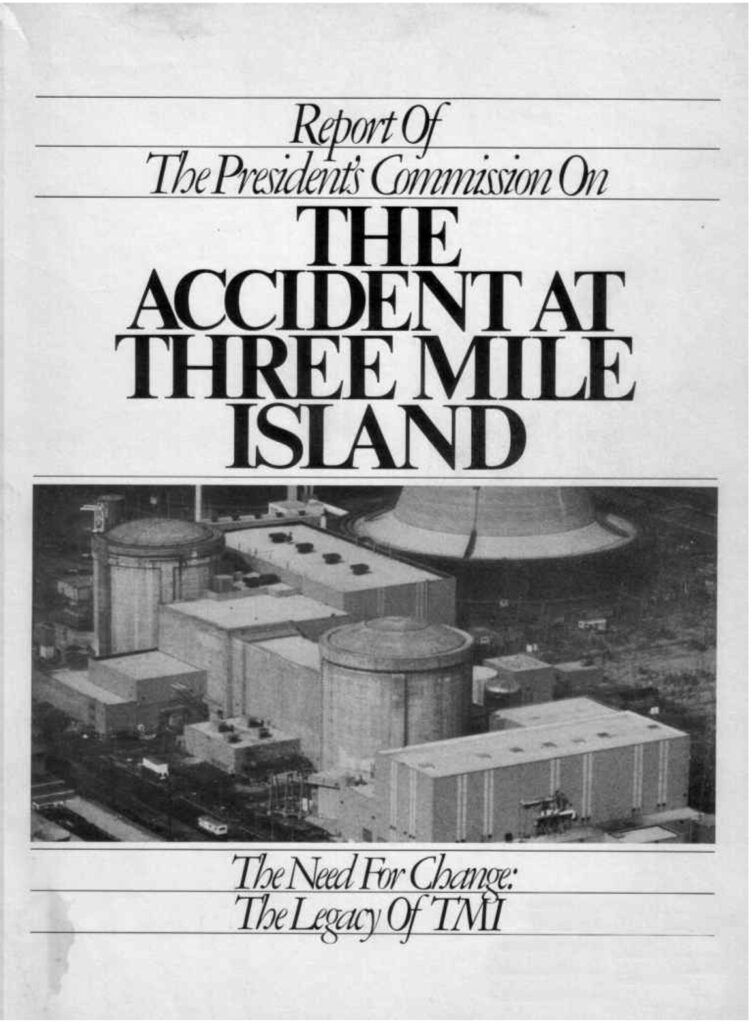
The “President’s Commission on the Accident At Three Mile Island” also noted that “the investigation looked into a number of possible causes for the closed valves. Each was examined in some considerable detail… deliberate valve mispositioning cannot be confirmed or completely dismissed. The Commission… requested that the FBI reexamine this possibility. The FBI response indicates that they have not found sufficient grounds for further investigation.”
Everyone Got What They Wanted; Except the American People
Despite widespread insistence on the risks and likelihood of nuclear sabotage, the possibility was never thoroughly investigated in America’s most high-profile nuclear power incident. Why?
- No harm, no foul: there was no actual risk of radiation sickness or excess cancers
- More importantly: many groups got what they wanted, including the owners of TMI
Nuclear evangelist Galen Winsor explained:
What happened at TMI is they turned off two plants five years ago, and ratepayers are paying to keep them fully staffed and fueled. There was no reason to shut them down except the owners, regulators and insurers agreed that was what they wanted to happen.
This pattern has persisted, with the Nuclear Regulatory Commission’s regulations veering into pseudo-scientific security theater. Nuclear power producers and utilities can still profit from decommissioning plants, making it financially beneficial to indulge anti-nuclear assertions.
The Fusion Energy Foundation described this emerging trend shortly after TMI:
“The nuclear industry plays ostrich” while a massive impediment for growth was placed on them.
The nuclear industry also benefited, as nuclear activist Michael Shellenberger even said in 2019, because the incident created funding and incentive for existing plants to be run at full capacity while they were still alive:
Not a single nuclear industry executive would have said so at the time. But in the decades since, many of them came to believe precisely that.
In response to Three Mile Island, the nuclear industry stepped up training, checklists, and better oversight. The result was that [the remaining] nuclear plants in the U.S. went from operating at 55 percent to over 90 percent of the time.
Anti-nuclear activists ranging from Jane Fonda to Ralph Nader to MHB Technical Associates also got what they wanted: a smoking gun to prove that their years of fearmongering were warranted and should be continued. One investment report at the time said that “any utility currently involved in construction work on a nuclear unit can expect to be constantly badgered by an organized, vocal opposition.”
Only 40 years later, after every assertion has been proven wrong, are people like Jane Fonda and other activists reversing course, claiming that the apocalyptic threat of climate change outweighs their previous hysteria.
Finally, the biggest beneficiaries were the oil, natural gas and coal hydrocarbon industries, who were guaranteed larger market share for decades by the aftermath of TMI. While our society runs on hydrocarbons, and the world should use more of them, it is also undeniable that they cause a much higher death toll per kilowatt than nuclear energy. We traded a non-existent death toll for a real death toll:
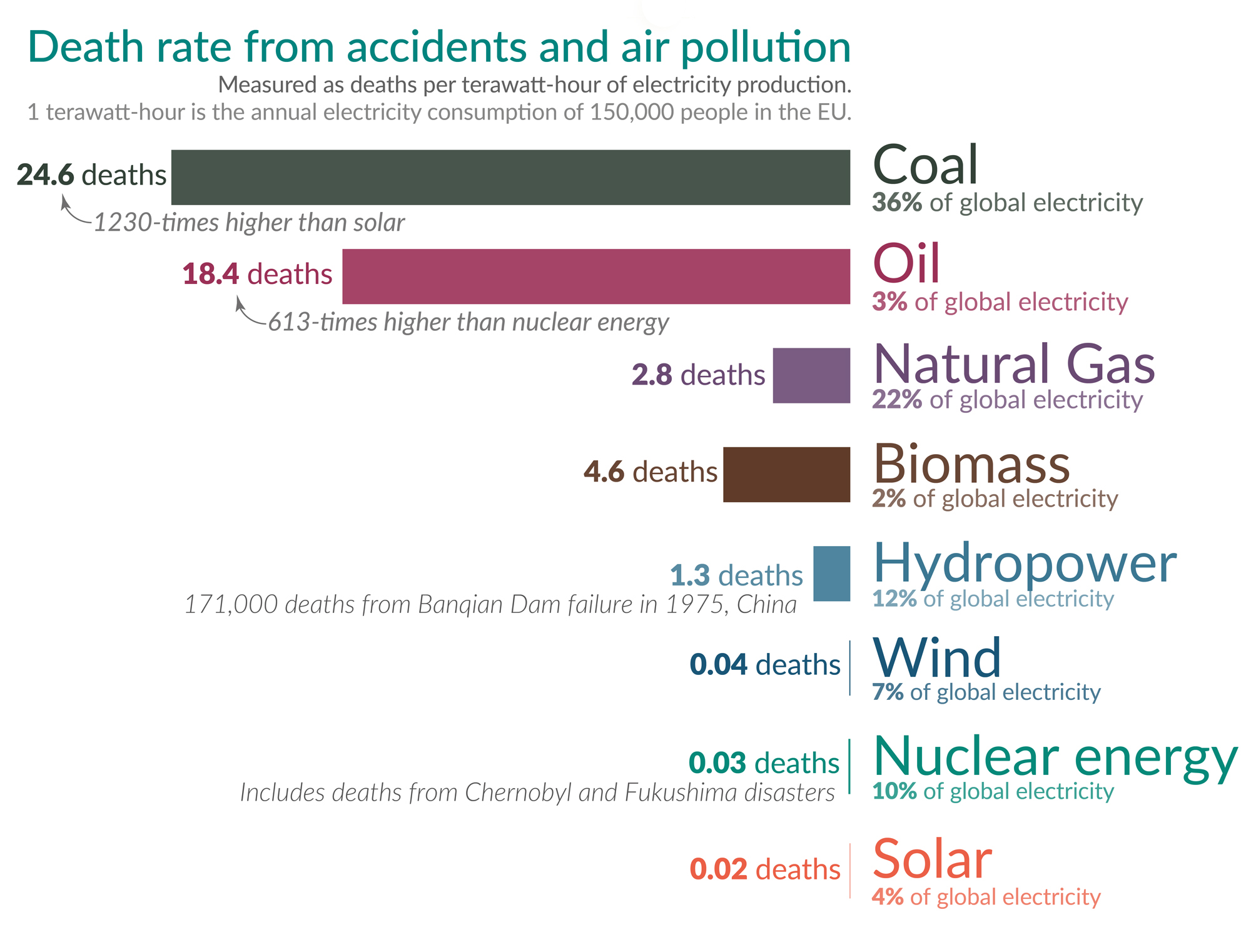
The Sinister and Sad Reality
As we unravel the intricate web of events surrounding the Three Mile Island incident, it becomes disturbingly clear that the true disaster was not a nuclear meltdown but a meltdown of trust and truth. The orchestrated fear and sabotage not only halted the progress of the cleanest energy source known to mankind but also manipulated the American people into a state of irrational fear, ensuring that the shadows of deceit and manipulation loom over our energy policies to this day.
The legacy of Three Mile Island is not just a chapter in the history of nuclear energy, but it’s a testament to how fear can be weaponized to control society, leaving behind a legacy of missed opportunities.
As the dust settles on the shadows of the past, a new dawn rises for nuclear energy, illuminating a path forward for the United States. The pro-growth, anti-entropic emergence of the BRICS+ alignment has suddenly awakened nuclear energy from its 50-year slumber. With 57 nuclear power plants currently under construction worldwide, it is noteworthy that 49 of these are backed by Chinese, Russian, or Indian financing and technology. In contrast, only 8 benefit from western-aligned support.
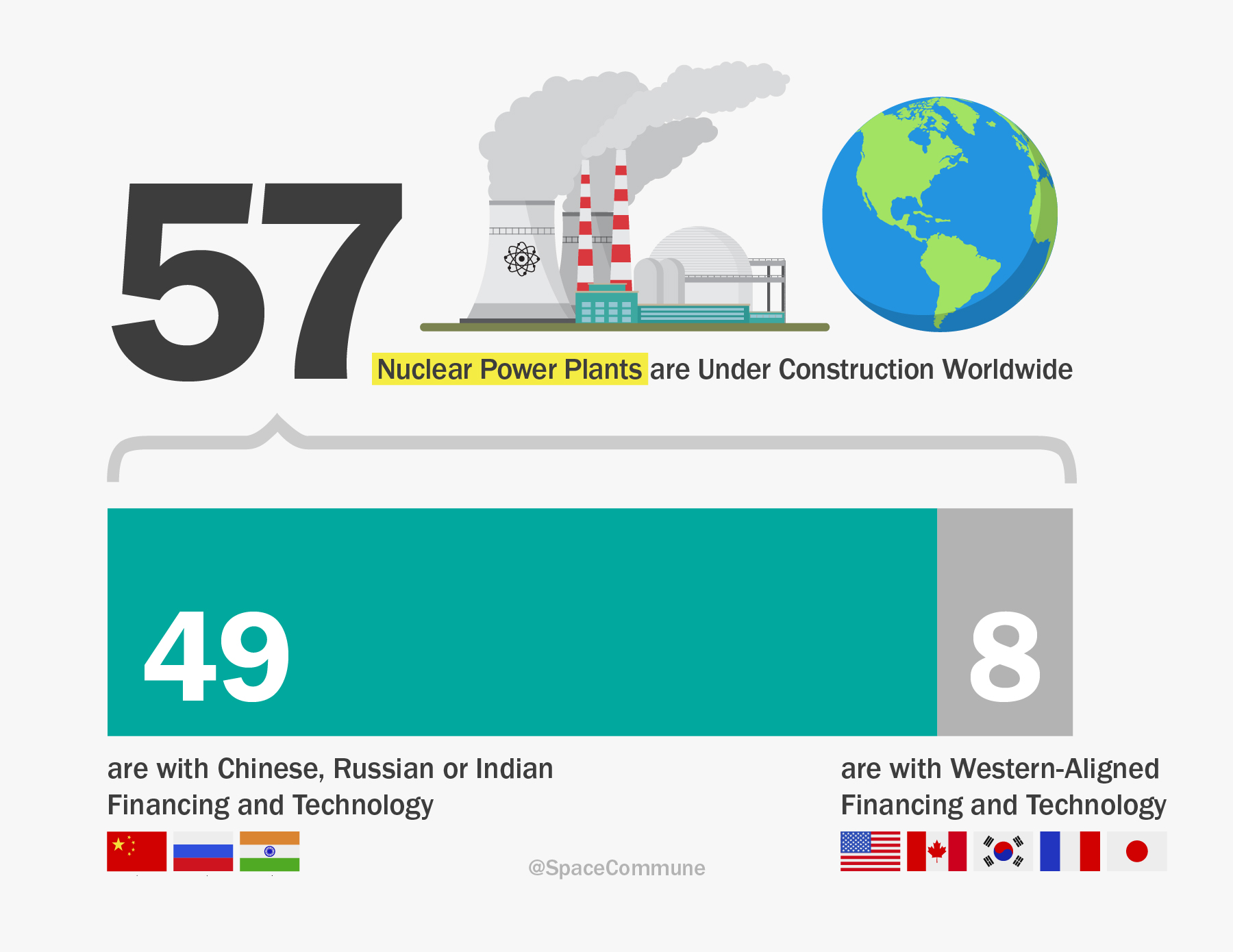
In this new era, the United States has the opportunity to transcend the fears of the past and harness the full potential of nuclear energy. By seeing the Three Mile Island fiasco for what it really is, and learning from the successes of Russia and China, America can create a vibrant, productive nuclear sector that not only meets its energy needs but also drives economic growth and the pursuit of truth.
Alex Dimitrios is a co-founder of Space Commune. Check out and support our upcoming documentary, Energy/Empire, which explores the hidden history behind the oligarchical plot to destabilize and de-industrialize Sri Lanka and Cuba, through meddling with their food production and energy production, respectively.
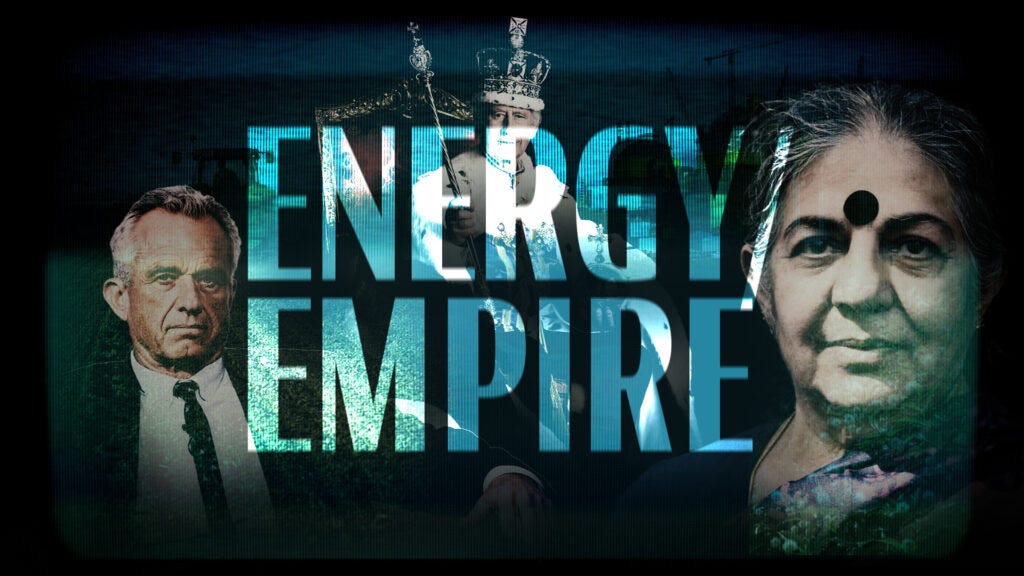
Did you know Space Commune is now on Telegram? Join our channel and never miss an update!
